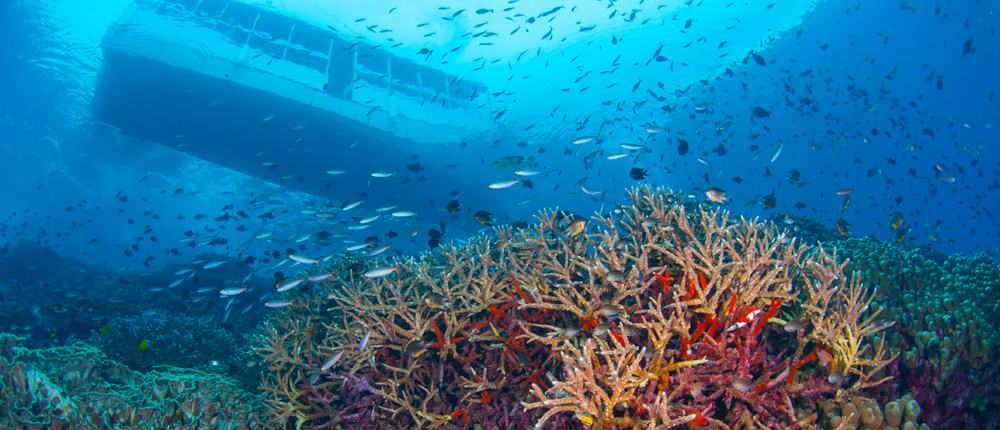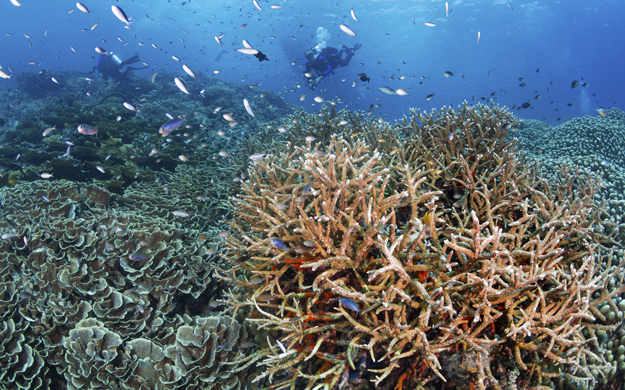Let’s Go to The Zoo
Towering underwater walls and dramatic formations can deliver a certain wow factor, but for many divers, what makes any dive truly memorable is the fish life. And that’s why the dive site known as The Zoo remains a Wakatobi favorite. It’s a very fishy place.
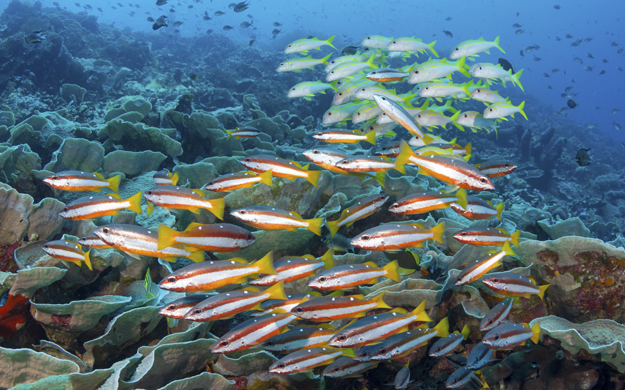
Clusters of reef-building corals in the upper sections of The Zoo provide the backdrop for a plentiful assortment of reef fish. Photo by Walt Stearns
All are welcome
Much like a terrestrial zoo, the Wakatobi dive site that bears this name is packed with an intriguing variety of creatures and attractions available to everyone. Thanks to typically calm conditions, the upper sections of The Zoo are ideal for snorkelers, including first-timers and families wanting to share the underwater wonders with their younger members.
Ready to Dive Wakatobi? Enquire >here.
Drop down a few meters and the coral formations become ideal hunting grounds for divers who enjoy long, shallow profiles. This same area is also the ideal place for a safety stop when returning from deeper multi-level profiles. For most divers, it’s easy to log 70-minute bottom times — all without running into deco or out of things to see.

As the slope at The Zoo steepens a bit, large barrel sponges crop up, giving photographers and curious divers a chance to hunt for tiny marine life treasures. Photo by Christian Gloor
A tour of the grounds
One of the attractions of The Zoo is its location. As one of the closer sites to the resort, The Zoo is a quick five-minute trip away from the Wakatobi jetty, making it convenient for those who aren’t up to long boat rides. This proximity also makes it a favorite for night dives. The zoo is part of a reef line that runs parallel to the shore. It begins as a collection of shallow formations within a sand-bottom bay, with clumps of hard corals rising to within a meter of the surface. Porites clusters provide the backdrop for a plentiful assortment of reef fish, which swirl in ever-changing patterns and can surround snorkelers and divers in a colorful cloud of life. A check of the sandy areas between the corals may reveal a host of bottom dwellers, including alien-like mantis shrimp.
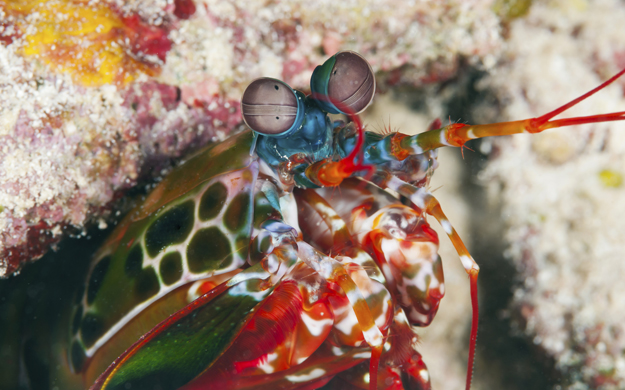
A check of the sandy areas between the corals at The Zoo may reveal a host of bottom dwellers, including the alien-like mantis shrimp. Photo by Glen Cowans
Moving just a few yards offshore, the coral density picks up as the reef line begins a gentle slope into a shallow valley. Staghorn and star corals predominate, and the multitudes of top-water reef fish are joined by more exotic individual finds such as frogfish, ghost pipefish, and leaf scorpionfish. The site offers plenty of anemones, and in addition to the perennial favorite “Finding Nemo” clownfish pairings that delight young divers and snorkelers, Zoo rewards macro enthusiasts with mushroom anemones that harbor a namesake mushroom coral pipefish.
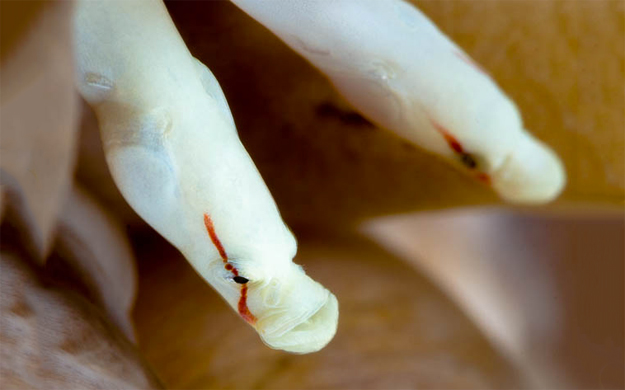
A pair of evasive mushroom coral pipefish give the appearance of small underwater pythons. Photo by Michael Zeigler
This small white pipefish has a triangular head that gives it the appearance of a small underwater python. As the slope steepens a bit, large barrel sponges crop up, giving photographers and curious divers a chance to hunt for tiny treasures such as the hairy squat lobsters that take refuge inside the barrels.
After hours at The Zoo
As any top attraction should, The Zoo doesn’t close early. Instead, it becomes one of the resort’s favorite night diving sites, and it never disappoints. The first show begins right around sundown with a final flurry of activity from the day shift before they head for nocturnal shelters. Then, as dusk turns to darkness, the hunters and scavengers emerge from their daytime lairs.
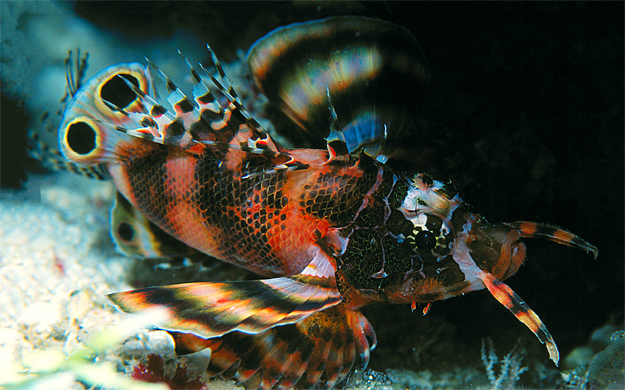
Hunters and scavengers such as the twinspot lionfish emerge from their daytime lairs at The Zoo to scour the reef. Photo by Wakatobi Resort
Cuttlefish and bobtail squid prowl the reefs, while twin-spotted lionfish cruise in search of dinner. You may spot an octopus out and about, while crustaceans use the cover of darkness to scour the seabed, and brilliant flatworms and nudibranchs make slow transits on the bottom. The zoo is also the preferred site for Wakatobi’s signature fluo-dives, which showcase the reefs in a whole new light to reveal corals and marine life in ghostly shades of glowing fluorescence.
Is it time to see Wakatobi’s The Zoo for yourself, along with the many other remarkable marine life that has earned the resort top billing with divers? Complete our quick trip inquiry. Or contact us directly at office@wakatobi.com. See you at The Zoo!


